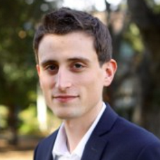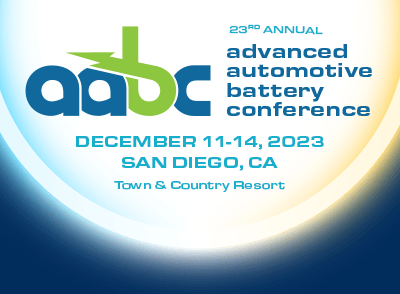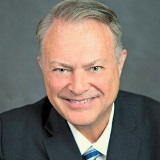Cambridge EnerTech’s
xEV Battery Technology, Application, and Market
(xEV用電池の技術・用途・市場)
世界の電気自動車の将来的成長の促進
2023年12月13日〜14日
世界各地で車両電化が大幅に進むにつれて、自動車メーカーは先を争って、将来の厳格な排出規制を満たし、かつ顧客を魅了して十分な収益も確保できる自動車を開発しようとしています。更に、自動車メーカーからの要件を満たすために、業界全体でコスト低下やエネルギー密度上昇、急速充電、安全性・耐久性向上に取り組む必要があります。この会議では、そうした傾向・課題・機会にどうやって対処し、今後の市場成長につなげるのか、また主要企業ではどうやって目標を達成しているのか、について検討します。
12月13日(水)
Registration Open10:30 am
Organizer's Welcome Remarks2:00 pm
Craig Wohlers, Executive Director, Conferences, Cambridge EnerTech
xEV MARKET EXPANSION
xEV市場の拡大
Lithium-Metal Battery Technology for EV Application: From Material Selection to Cell Design
 Mei Cai, Director, Battery Cell Systems Research Lab, General Motors Global R&D Center
Mei Cai, Director, Battery Cell Systems Research Lab, General Motors Global R&D Center
Li-metal battery technology has been systematically investigated including electrode, separator, electrolyte, cell design, as well as cell manufacture process. In this talk, we would like to first share our perspectives on the development of lithium-metal batteries. We will then discuss the principle and logic for the cell material selection, cell component integration, as well as the overall cell design with supporting data from both the material and cell-level evaluation.
Pathways to Faster Charging of EVs
 Tobias Glossmann, Principal Systems Engineer, HV Battery Research and Test Lab, Mercedes-Benz Research and Development North America
Tobias Glossmann, Principal Systems Engineer, HV Battery Research and Test Lab, Mercedes-Benz Research and Development North America
Fast-charging is a critical enabler for the adoption of electric transportation. Unfortunately, batteries with higher rate capability are often more expensive, having a negative effect on profitable EV business. In this talk, we take a broader look at new Li-ion developments, beyond Li-ion technology, as well as system considerations that offer different approaches and a positive perspective on the future of fast-charging EVs.
Lithium-ion and beyond: Challenges in Integrating the Next Generation of Battery Cell Technologies into Stellantis Vehicles
 Carrie Okma, Head of Lithium Ion Modules & Cell Product Release & Validation Center, Stellantis
Carrie Okma, Head of Lithium Ion Modules & Cell Product Release & Validation Center, Stellantis
Requirements for battery cells to be used in electric vehicles range from the obvious to the subtle. A description of these requirements will be provided and then compared to the developmental status of a spectrum of next-generation lithium-ion and beyond-lithium-ion chemistries.
Refreshment Break in the Exhibit Hall with Poster Viewing (Sponsorship Opportunity Available)3:25 pm
Presentation to be Announced4:10 pm
Impact of EV Cell Design on Performance vs. Lifetime Trade-offs
 James McKinney, Battery Technology Engineer, BMW of North America
James McKinney, Battery Technology Engineer, BMW of North America
This presentation will describe BMW’s view of the role that different cell designs and chemistries can play in designing batteries for diverse EV applications. Specifically, the impact of cell design and charging protocol optimization on battery lifetime (calendar and cycle aging) will be discussed. Key challenges will be addressed with examples from BMW research projects.
Accelerating Battery Development with Platform Technologies

Battery technologies are typically developed with a specific use-case and business-case in mind. However, taking an integrated approach to requirements definition, concept iteration, and validation may allow for more innovative design and manufacturing solutions. We explore the use of platform technologies in the laboratory, in prototyping, and in data analysis to hasten development cycles.
Close of Day5:50 pm
12月14日(木)
Registration and Morning Coffee8:30 am
Organizer's Remarks9:00 am
Craig Wohlers, Executive Director, Conferences, Cambridge EnerTech
xEV MARKET EXPANSION
xEV市場の拡大
Coffee Break in the Exhibit Hall with Poster Viewing10:45 am
Computational Material Science in Advancing Battery Development
 Balachandran Radhakrishnan, Principal Researcher, Nissan USA
Balachandran Radhakrishnan, Principal Researcher, Nissan USA
Secondary batteries development has come a long way, having found applications in small electronic devices in its early stages, to powering the next revolution in automobile industry. While the initial stages of the development were fueled by rigorous and painstakingly long experiments, computational material science has been paving the way in accelerating the recent advances in batteries. In this talk, I will focus the role of computations in Nissan's R&D efforts.
Safety First in Second-Life Battery Energy Storage Systems: A Wholistic Value-Chain Approach to Maximizing System Performance and Minimizing Operational Risk for Energy Storage Systems Utilizing First- and Second-Life Batteries
 Jeremy Bedine, Product Head, Volvo Energy
Jeremy Bedine, Product Head, Volvo Energy
This talk will provide a high-level overview of the BESS product lifecycle, and it will lay out the total value chain from design and development, site engineering and deployment, digitization, remote monitoring, field service, and asset management. It will illustrate how safety and risk management are woven into each of these value-chain components.
Electrochemical Impedance Spectroscopy in Electric Vehicles: A Review of Applications and Practical Challenges
 Yasaman Masoudi, Engineer, BMS Algorithm, Stellantis
Yasaman Masoudi, Engineer, BMS Algorithm, Stellantis
Electrochemical Impedance Spectroscopy (EIS) is a frequency-based characterization method with wide applications, including batteries, fuel cells, medicine, material characterization, and corrosion. Despite the promising advantages, adoption of EIS technique in electric vehicles (EVs) comes with challenges. For example, conventional laboratory-based EIS setups are utilized standalone and offline, whereas in EVs, onboard implementation is of interest. Moreover, the battery should be excited at linear mode utilizing a small current, and therefore higher noise levels in EVs complicate EIS measurement. This talk first, reviews the EIS EV applications, and second, showcases the above-mentioned practical challenges based on evidence.
Session Wrap-Up
Networking Lunch (Sponsorship Opportunity Available)1:05 pm
Dessert Break in the Exhibit Hall with Poster Viewing - Last Chance for Viewing (Sponsorship Opportunity Available)2:00 pm
INNOVATIONS IN BATTERIES FOR xEVs
xEV向け電池のイノベーション
Progress in Liquid Electrolyte Development for Lithium-Metal Anodes
 Dee Strand, PhD, CSO, R&D, Wildcat Discovery Technologies, Inc.
Dee Strand, PhD, CSO, R&D, Wildcat Discovery Technologies, Inc.
This talk will discuss progress in performance of liquid electrolytes for use with lithium-metal anodes. Rapid capacity fade and electrolyte consumption can occur with liquid electrolyte cells that contain lithium-metal anodes. However, these problems can be mitigated with advanced formulations. The effect of cycling protocol can also be quite dramatic and will be reviewed in this presentation.
Fast Charging of Lithium-ion Batteries: Pitfalls and Possibilities
 Daniel P. Abraham, PhD, Senior Materials Scientist, Argonne National Laboratory
Daniel P. Abraham, PhD, Senior Materials Scientist, Argonne National Laboratory
State-of-the-art lithium-ion batteries (LIBs) can be fully charged in about 1h with minimal degradation in cell performance. However, full charging over shorter durations causes irreversible damage to the battery via losses in the mobile Li-ion inventory (capacity fade) and resistance increase (power fade). This presentation will describe reasons for this performance loss and illustrate efforts to enhance the charging ability of LIBs through material and electrode modifications.
Networking Refreshment Break3:50 pm
Overcoming the Barrier of Deploying Second-Life EV Batteries for Storage Applications
 Chris Mi, PhD, Fellow, IEEE & SAE; Distinguished Professor, San Diego State University
Chris Mi, PhD, Fellow, IEEE & SAE; Distinguished Professor, San Diego State University
The number of electric vehicles is growing rapidly, and so are retired batteries. The batteries are costly in production and recycling. Handling retired EV batteries is thus important for both the economy and the environment. DOE and CEC have funded multiple projects to promote second-life EV batteries (SLBs) in storage applications. However, deploying SLBs will encounter serious issues, such as lifetime, cost, safety, liability, and regulations. This talk will discuss the result of a recent CEC-funded project, including the aging mechanism, charge/discharge methods, thermal management, cell/pack balancing, energy management, policy, standards, and fire codes related to energy storage systems using second-life EV batteries.
2-Phase Immersion Cooling System for Thermoplastic Battery Enclosures to Reduce Climate-Related Driving Range Variation
 Gero Mimberg, Manager Thermal Systems, Kautex Textron GMBH
Gero Mimberg, Manager Thermal Systems, Kautex Textron GMBH
As an enabling technology for fast charging, the implementation of 2-phase immersion cooling, where the traction battery serves as an evaporator in a refrigeration process. The 2-phase immersion cooling enables very high heat transfer rates of measured 3400 W/m^2*K and, at the same time, maximum temperature homogeneity within the battery pack at optimal battery operating temperature. Thus, heat loads at charging rates of more than 6C can be safely and permanently managed by the battery thermal system. In addition, 2-phase immersion cooling has been shown to be a useful measure in preventing the progression of thermal events
Close of Conference4:55 pm
* 不測の事態により、事前の予告なしにプログラムが変更される場合があります。
アジェンダ・講演者・スポンサー更新




 Talk Title to be Announced
Talk Title to be Announced Talk Title to be Announced
Talk Title to be Announced

 Talk Title to be Announced
Talk Title to be Announced Talk Title to be Announced
Talk Title to be Announced











